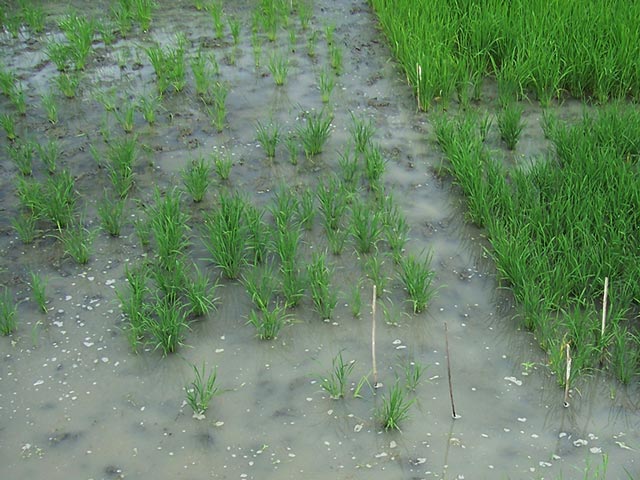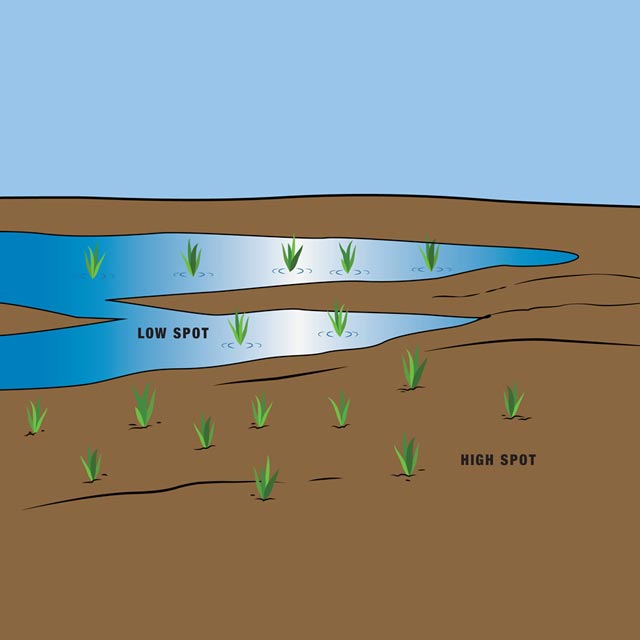Field level (low spots)
What it does
Low spots in the field have softer soils, causing problems of seed emergence. These spots tend to hold water longer; snails can group together in these spots as the field dries.
Why and where it occurs
The problem occurs due to unevenness of fields and where the low spots lie below the water level leading to water ponding. The problems arising from low spots tend to be more in direct-seeded fields.
How to identify
Check the field level. When there are low spots:
- parts of the field are lower than the surrounding area and lower than the average elevation of the entire field
- plants at these points often have crop stand problems as they are focal points for snail attack or crop emergence problems
The pattern of damage is usually in patches.
Why is it important
Low spots are more problematic during planting or crop establishment. In rainfed areas, low spots may actually yield well as they suffer less water stress.
Low spots in the field can be economically significant because of the general levelness and losses across the whole field. When fields are leveled, yields can be increased significantly by 10−50% or more. The benefits (or losses) due to uneven fields are greater the higher the degree to which the field is not level.
How to manage
- Level the fields properly
- Maintain a flat, even surface when plowing









